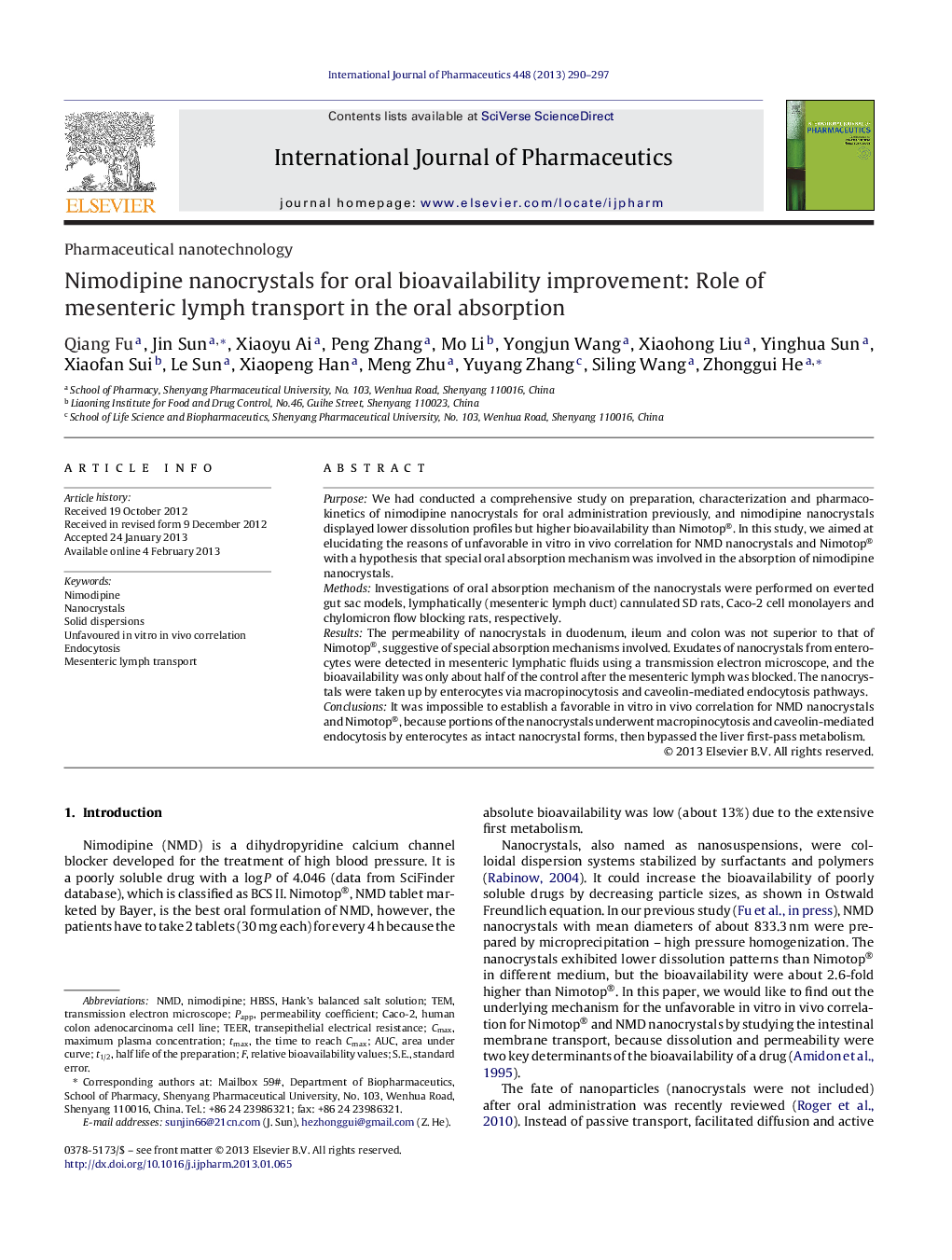| Article ID | Journal | Published Year | Pages | File Type |
|---|---|---|---|---|
| 2502555 | International Journal of Pharmaceutics | 2013 | 8 Pages |
PurposeWe had conducted a comprehensive study on preparation, characterization and pharmacokinetics of nimodipine nanocrystals for oral administration previously, and nimodipine nanocrystals displayed lower dissolution profiles but higher bioavailability than Nimotop®. In this study, we aimed at elucidating the reasons of unfavorable in vitro in vivo correlation for NMD nanocrystals and Nimotop® with a hypothesis that special oral absorption mechanism was involved in the absorption of nimodipine nanocrystals.MethodsInvestigations of oral absorption mechanism of the nanocrystals were performed on everted gut sac models, lymphatically (mesenteric lymph duct) cannulated SD rats, Caco-2 cell monolayers and chylomicron flow blocking rats, respectively.ResultsThe permeability of nanocrystals in duodenum, ileum and colon was not superior to that of Nimotop®, suggestive of special absorption mechanisms involved. Exudates of nanocrystals from enterocytes were detected in mesenteric lymphatic fluids using a transmission electron microscope, and the bioavailability was only about half of the control after the mesenteric lymph was blocked. The nanocrystals were taken up by enterocytes via macropinocytosis and caveolin-mediated endocytosis pathways.ConclusionsIt was impossible to establish a favorable in vitro in vivo correlation for NMD nanocrystals and Nimotop®, because portions of the nanocrystals underwent macropinocytosis and caveolin-mediated endocytosis by enterocytes as intact nanocrystal forms, then bypassed the liver first-pass metabolism.
Graphical abstractFigure optionsDownload full-size imageDownload high-quality image (96 K)Download as PowerPoint slide
